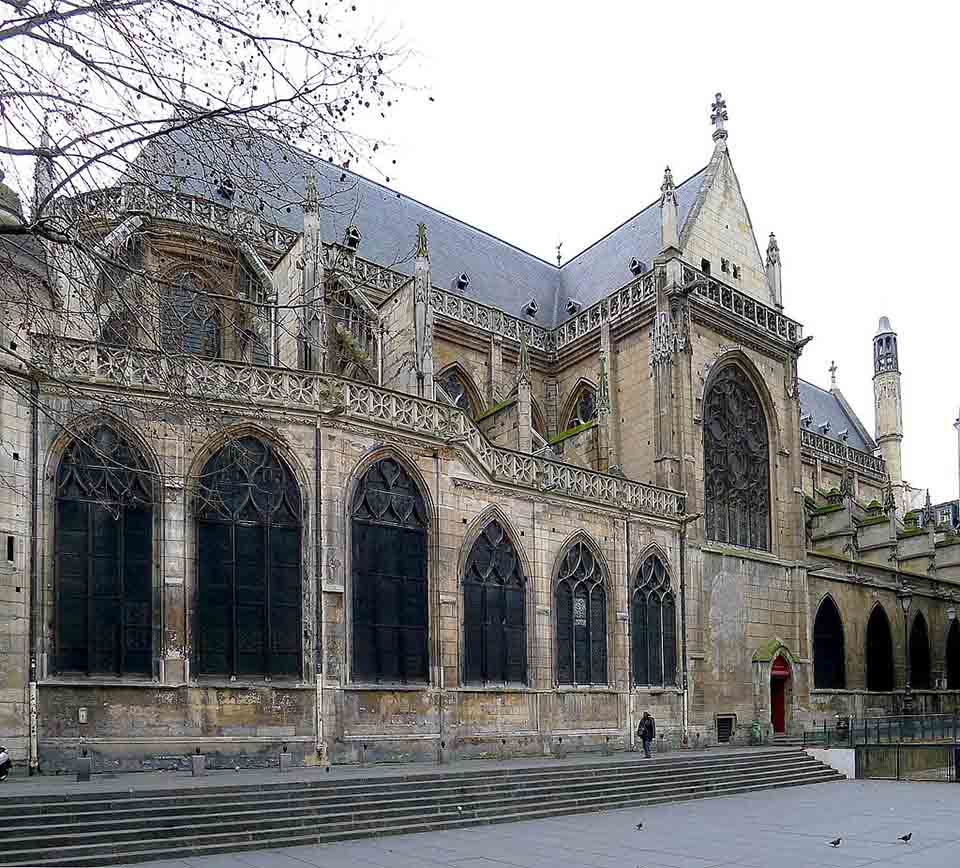
There was a time, many centuries ago, when music was much quieter than it is today. Before the eleventh century most music consisted of a single unaccompanied vocal melody. The so-called Gregorian chant was just this. It appeared during the ninth century and was supposed to have been invented by Pope St. Gregory the Great, or so the story goes. Many of these haunting, meandering melodies are strangely beautiful, especially when sung in a church or cathedral.
By the twelfth century, composers gradually caught on to the idea of adding extra vocal parts, at first just a single sustained drone-like note below the melody. This added musical interest and gave the music a sense of tonality. It was music for contemplation and by today’s standards it was exceptionally quiet, sung in an ecclesiastical setting by small groups of men and boys. Musical instruments didn’t come on to the scene in western religious music until a good many years later.
We know the names of only a few dozen composers from those far-off medieval times. The manuscripts which still exist represent only a fraction of the music composed to meet the growing needs of the church. One of the most remarkable composers of the day was also accomplished in poetry, theology, the visual arts and the natural sciences and was also one of the few women composers whose name graces the pages of musical history. When relatively few women could even read, Hildegard of Bingen wrote books about theology, botany and medicine and also found time to write liturgical songs. In October 2012, Pope Benedict XVI named Hildegard a Doctor of the Church, a title which is evidently more important than it sounds.
Hildegard von Bingen (1098-1179): Ave, generosa. Arreanna Rostosky (soloist), UCLA Early Music Ensemble. (Duration: 05:03; Video: 1080p HD)
Saint Hildegard of Bingen was born to aristocratic parents, not in the town of Bingen as you might reasonably assume but about seventy miles to the south in Bermersheim. The youngest of ten children, she was evidently a rather sickly child and from early childhood claimed to have visions. Perhaps because of this, her parents packed her off to the church where she seemed to thrive. In later years, as a Benedictine abbess, Hildegard founded the monasteries of Rupertsberg and Eibingen. She was among the most powerful and influential people of her time, consulted by bishops, popes and kings. Her scientific books contain more than two thousand remedies and health suggestions and she described how trees and plants could be used for healing.
Throughout her life, Hildegard saw visions and heard mysterious voices. Her visions were usually accompanied by illness, one can’t help wondering whether there might have been a connection. Hildegard certainly had an original musical style, characterized by wide vocal ranges, large melodic leaps and florid melodies. Nearly all her music consists of a single melody in a chant-like style but it remained in obscurity until the late twentieth century, when there was a revival of interest in her work.
Ave generosa is a song dedicated to the Virgin Mary and although Hildegard’s musical style is evident – especially her use of soaring melodies – the music clearly belongs to the early Middle Ages with its single melody and drone-like sustained tone. But my heavens, it is extraordinary how this extraordinary music still speaks to us from across the centuries.
Giovanni Pierluigi da Palestrina (1525-1594): Gloria from Missa Papae Marcelli. l’Académie Vocale de Paris, dir. Iain Simcock (Duration: 05:40; Video 1080p HD)
Here’s someone else, like Leonardo da Vinci whose name has become attached to the name of a town. In this case it’s the ancient city and commune of Palestrina which lies about thirty miles east of Rome. Giovanni Pierluigi da Palestrina is the best-known of the Italian Renaissance composers and he had a huge impact on the development of church music. He certainly wrote plenty of it: over a hundred masses, three hundred motets over thirty magnificats and countless other compositions.
This superb vocal ensemble, founded in 1993 is for singers aged between thirteen and eighteen and regularly appears at l’Église Saint Merry, a 16th century Gothic church on the Right Bank of Paris. Missa Papae Marcelli, or Pope Marcellus Mass, is one of Palestrina’s most well-known compositions. It was probably written around 1562, composed in honour of Pope Marcellus II, who had the distinction of being Pope for just twenty-two days. (He died, since you asked.) Of course, musically things had moved on from the days of Hildegard von Bingen. This work is written for six independent voices and you’ll probably notice a sense of smoothness to the sound.
This is one of the main features of Palestrina’s music, achieved partly by placing dissonant sounds on weak beats thus softening their effect. He also crafted his melodies with incredible care. Even today, advanced students of music theory are required to write exercises in “the Palestrina style,” observing the strict rules of species counterpoint which, I can tell you is as difficult as it sounds. The rules were laid down much later – in the 18th century by Johann Joseph Fux. And in case you’re wondering, his name rhymes with “books” and not with “ducks.”
 |
 |
 |





